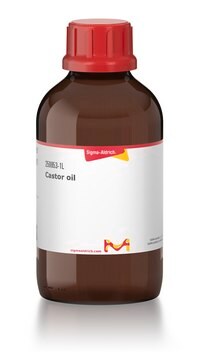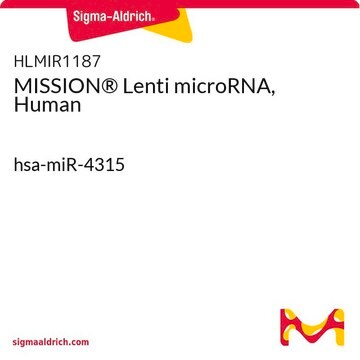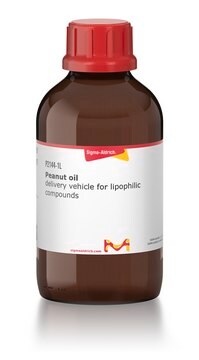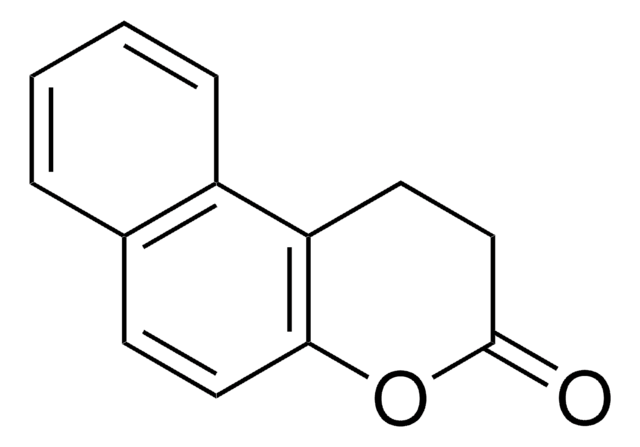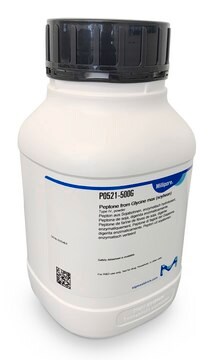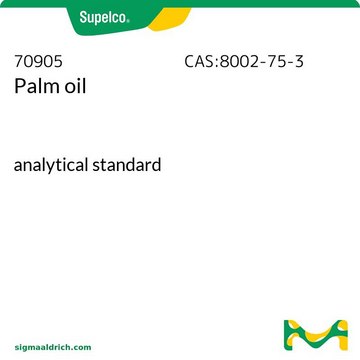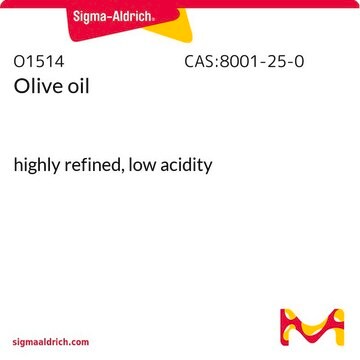S5007
Sunflower seed oil
from Helianthus annuus, liquid, emollient
Se connecterpour consulter vos tarifs contractuels et ceux de votre entreprise/organisme
About This Item
Numéro CAS:
Numéro CE :
Numéro MDL:
Code UNSPSC :
12352200
Nomenclature NACRES :
NA.77
Produits recommandés
Nom du produit
Sunflower seed oil from Helianthus annuus,
Densité
0.92 g/mL at 25 °C (lit.)
Niveau de qualité
Vous recherchez des produits similaires ? Visite Guide de comparaison des produits
Description générale
Sunflower seed oil from Helianthus annuus contains saturated fatty acids (palmitic and stearic acids), monounsaturated fatty acid (oleic acid), and polyunsaturated acid (mostly linoleic acid). In addition, this edible oil also contains nonglyceridic contents including tocopherols and plant sterols, and is rich in vitamins and minerals.
Application
Sunflower seed oil from Helianthus annuus was used as a vehicle to administer tamoxifen and 4-hydroxytamoxifen to mice.
Actions biochimiques/physiologiques
Sunflower seed oil is one of the most used vegetable oils in human nutrition. Oilseed crop sunflower (Helianthus annuus) is also used for biodiesel production. Sunflower oil is used as an emollient in cosmetics, and it serves as an effective phenolic antioxidant. Phytosterols in sunflower oil help in regulating the cholesterol levels in the body. Therefore, sunflower oil may be used to treat pathological conditions such as like acne, arthritis, and hair damage.
Risques supp
Code de la classe de stockage
10 - Combustible liquids
Classe de danger pour l'eau (WGK)
WGK 3
Point d'éclair (°F)
>230.0 °F
Point d'éclair (°C)
> 110 °C
Équipement de protection individuelle
Eyeshields, Gloves
Faites votre choix parmi les versions les plus récentes :
Déjà en possession de ce produit ?
Retrouvez la documentation relative aux produits que vous avez récemment achetés dans la Bibliothèque de documents.
Les clients ont également consulté
Adam B Sendor et al.
Gastrointestinal cancer : targets and therapy, 5, 61-71 (2015-04-07)
PTEN loss contributes to the development of liver diseases including hepatic steatosis and both hepatocellular carcinoma (HCC) and cholangiocarcinoma (CC). The factors that influence the penetrance of these conditions are unclear. We explored the influence of sustained hypoxia signaling through
Vegetable oils: Dietary importance
"Reference Module in Food Science (2016)
Rayan Naser et al.
Scientific reports, 6, 20230-20230 (2016-02-06)
Adult neural stem cells (aNSCs) are relatively quiescent populations that give rise to distinct neuronal subtypes throughout life, yet, at a very low rate and restricted differentiation potential. Thus, identifying the molecular mechanisms that control their cellular expansion is critical
Andria R Robinson et al.
Redox biology, 17, 259-273 (2018-05-11)
Accumulation of senescent cells over time contributes to aging and age-related diseases. However, what drives senescence in vivo is not clear. Here we used a genetic approach to determine if spontaneous nuclear DNA damage is sufficient to initiate senescence in
Takayuki Hirota et al.
Biology of reproduction, 85(2), 367-377 (2011-04-29)
Germ cells ensure the diversification and totipotency of genetic information via the elaborate genetic and epigenetic regulation of the genome architecture during their development. To understand the mechanism underlying the regulation of genome function in germ cells, it is of
Notre équipe de scientifiques dispose d'une expérience dans tous les secteurs de la recherche, notamment en sciences de la vie, science des matériaux, synthèse chimique, chromatographie, analyse et dans de nombreux autres domaines..
Contacter notre Service technique
